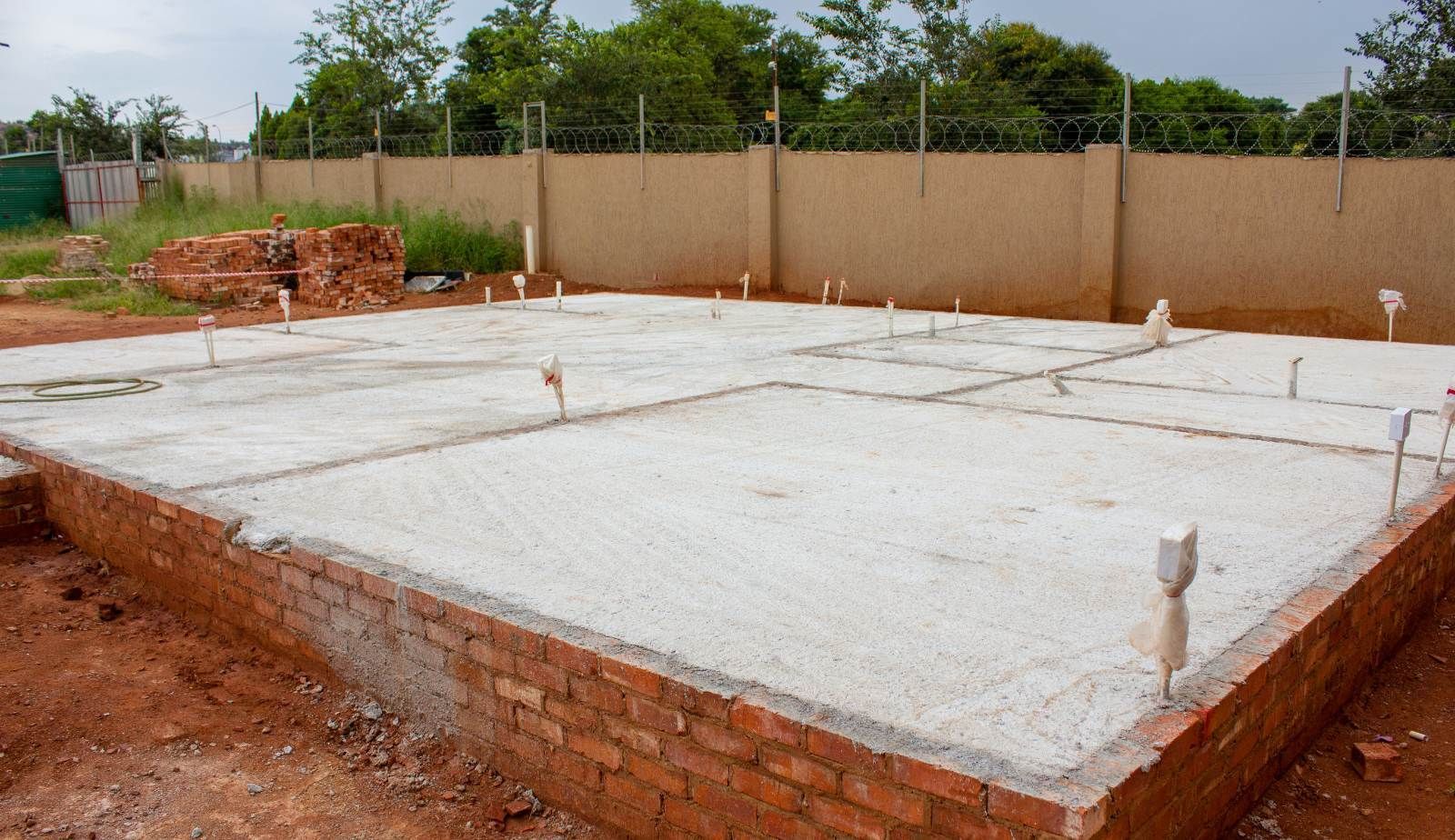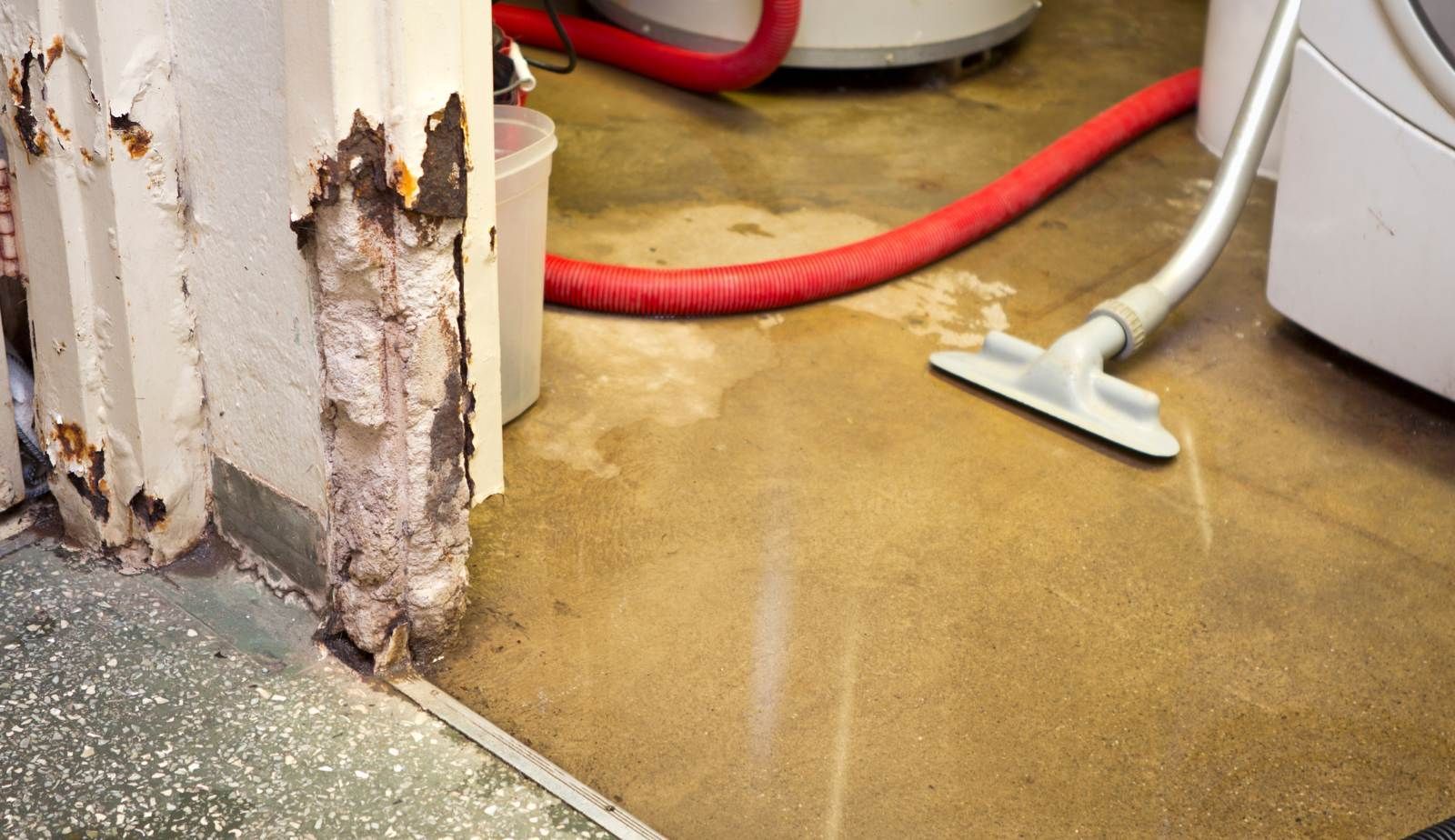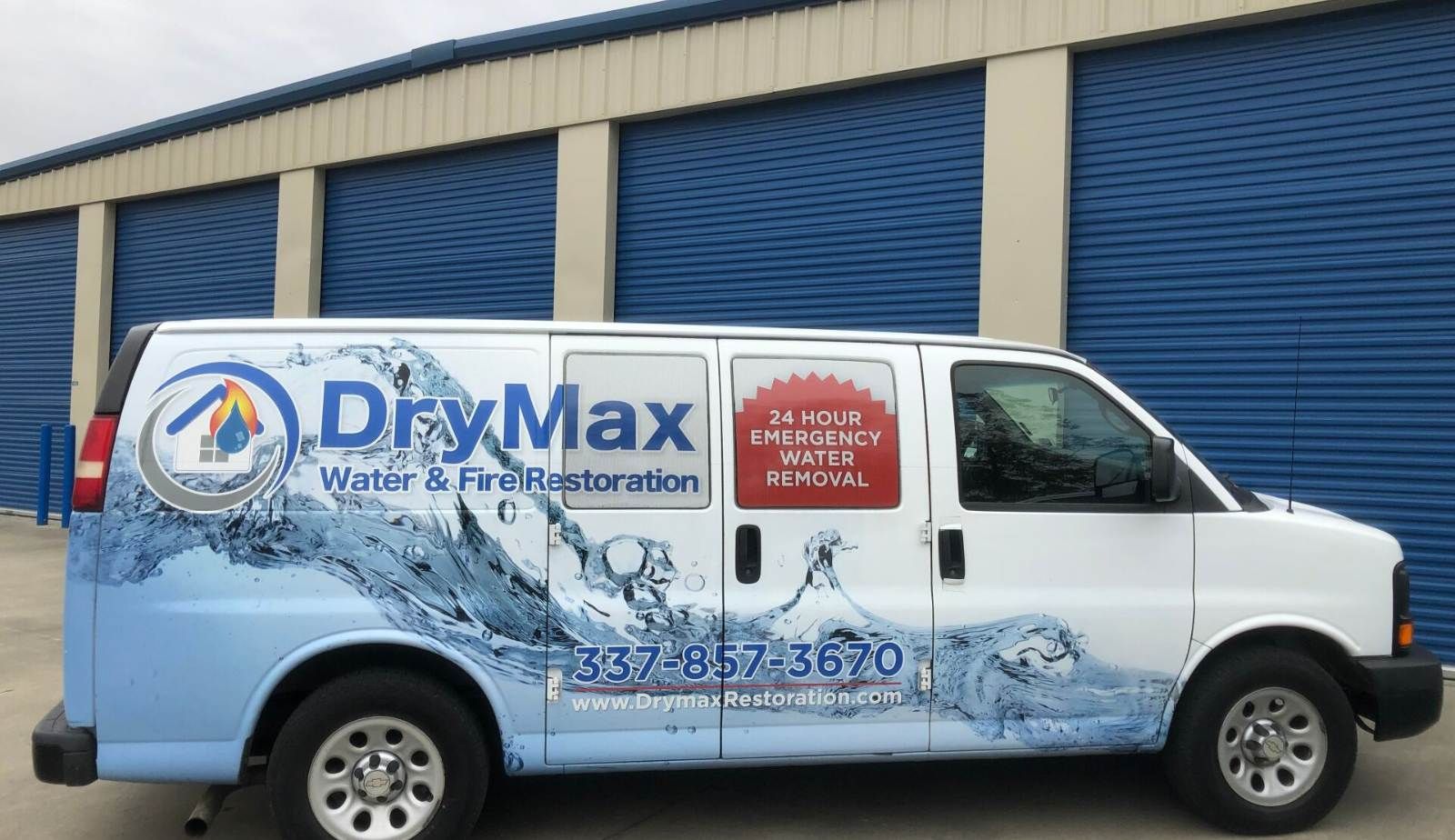Water Damage in Louisiana’s Slab Homes: Understanding Hidden Risks and How Drymax Mitigates Them
Louisiana's unique climate and geographic conditions pose significant challenges for homeowners, especially those with slab foundations. These homes are particularly vulnerable to water intrusion, which can lead to costly structural damage if not addressed promptly. The combination of high humidity and heavy rainfall creates an environment where water can accumulate unnoticed beneath concrete slabs, increasing the risk of hidden leaks and other issues.
Understanding the specific vulnerabilities associated with slab foundations is crucial for effective home maintenance. Homeowners may not realize that a slab leak can go undetected until it causes serious damage, making early detection and prevention essential. Equipped with knowledge about these risks, individuals can take proactive steps to safeguard their homes.
Drymax offers solutions that address the unique challenges posed by slab homes. By providing targeted water management strategies and detection methods, Drymax helps homeowners mitigate the risks of water damage, ensuring their homes remain safe and structurally sound amidst Louisiana's climatic challenges.
The Unique Risks of Water Damage in Louisiana’s Slab Homes
Slab foundations offer stability and support to many homes in Louisiana. However, they also come with specific vulnerabilities concerning water intrusion that can lead to significant damage if not addressed promptly.
Hidden Threats Beneath Concrete Foundations
Slab homes in Louisiana are particularly susceptible to hidden water damage. Under-slab leaks can occur when pipes beneath the concrete begin to deteriorate. This situation can go unnoticed for long periods, allowing water to seep into the ground and compromise the structural integrity of the home.
Mold growth is another concern, thriving in moist conditions often created by leaks. Given Louisiana's humid climate, early detection of these leaks is crucial to preventing extensive damage and costly repairs.
Why Slab Homes Are Especially Vulnerable in Louisiana
The unique geographic and climatic conditions of Louisiana heighten the risk of water damage in slab homes. Heavy rainfall can lead to water accumulation around and beneath foundations. Given the state's high humidity, this increases the potential for moisture intrusion.
Additionally, poor drainage in many areas exacerbates the problem. Without proper grading and drainage systems, water can pool near foundation walls, leading to further risks of foundation damage. The combination of these factors creates an environment where slab foundations can suffer significant structural issues.
Early Warning Signs of Water Intrusion
Homeowners should be vigilant for several early warning signs of water intrusion in slab homes. Common indicators include wet spots on floors, especially near walls, which may point to underlying leaks.
Cracks in walls or floors are another critical sign that a slab foundation may be compromised. If doors and windows become difficult to close, this could be due to shifting foundations caused by moisture issues. Regular inspections can help catch these problems early, ensuring that necessary measures can be taken to protect the home's structural integrity.
Environmental and Geological Challenges in Louisiana
Louisiana's unique geological characteristics present significant challenges for homeowners. The combination of a high water table, expansive clay soils, and flood-prone areas creates a complex environment for slab foundations prone to water intrusion.
High Water Table and Heavy Rainfall
Louisiana often experiences a high water table due to its geographical conditions. Prolonged heavy rainfall can cause groundwater levels to rise significantly, leading to water accumulation under slab foundations. The moisture can exert pressure on the slab, causing cracks and other structural issues.
Residents must recognize the need for proper drainage systems to manage excess water. Water intrusion can exacerbate mold growth and health risks, highlighting the importance of addressing these factors proactively.
Impact of Expansive Clay Soils
The soil in many regions of Louisiana is predominantly clay, known for its capacity to expand and contract with moisture changes. When saturated, clay can swell, pushing against slab foundations. Conversely, as it dries, it shrinks, potentially creating voids beneath the slab.
This cycle leads to uneven settling and structural instability. Homeowners must be aware that water management strategies are crucial to minimize the impact of clay soils on their foundations. Regular inspections and moisture control measures can help maintain integrity.
Flood-Prone Areas and Soil Movement
Many areas in Louisiana are susceptible to flooding, given the state's flat terrain and proximity to water bodies. Flooding can result in significant soil movement, destabilizing foundations. The movement can be subtle but damaging over time, leading to potential safety hazards.
It is essential for homeowners in these areas to invest in flood-resistant designs and construction methods. Understanding the risks associated with soil movement and taking preventive measures can protect against severe damage. Proper landscape management and drainage systems play a critical role in reducing these risks.

Pathways of Water Intrusion in Slab Foundations
Water intrusion in slab foundations can occur through various pathways, posing significant risks for homeowners. Understanding these pathways is crucial for effective moisture control and prevention of water damage.
Cracks and Seepage Points
Cracks in slab foundations can serve as primary entry points for water. These may develop due to soil settling, temperature changes, or excessive moisture. Even minute cracks can allow water to seep through, particularly in humid environments like Louisiana.
Homeowners should regularly inspect their foundations for visible cracks or signs of seepage. Seepage points can often lead to mold growth and damage to structural integrity if left unaddressed. Utilizing sealants can help mitigate this risk, but proactive monitoring remains key.
Plumbing Leaks Beneath the Slab
Plumbing leaks present a major risk for slab homes by causing hidden pools of water beneath the foundation. These leaks can be particularly insidious, as they may go unnoticed until considerable damage has occurred.
Common sources include broken pipes or worn fittings. Homeowners should be aware of unusual wet spots or odors, as these can indicate plumbing issues. Regular plumbing inspections can aid in the early detection of leaks, potentially saving homeowners from costly repairs.
Inadequate Drainage Systems
Inadequate drainage systems can exacerbate water intrusion risks in slab foundations. Poorly designed or blocked drainage can lead to water pooling around the foundation. This accumulation of water creates pressure against the slab, which can result in cracks or movement.
Effective drainage systems must be installed to manage surface and subsurface water. This includes downspouts directing water away from the foundation and properly graded landscaping. Proper maintenance of these systems is essential to prevent future water intrusion and foundation damage.
Understanding Foundation Damage and Its Consequences
Foundation damage is a significant concern for homeowners, especially in regions like Louisiana where slab foundations are common. The interplay between expansive clay soils and water intrusion can lead to various structural issues. Recognizing the signs of foundation damage is critical in preventing further complications.
Structural Issues from Soil Shifting
Expansive clay soils are prevalent in Louisiana and pose unique challenges to slab foundations. These soils expand when wet and contract when dry, creating movement that exerts pressure on the foundation.
Common structural issues include:
- Cracking: Vertical or horizontal cracks in interior and exterior walls can indicate foundation shifts.
- Uneven floors: Sloped or bouncy floors often suggest underlying foundation problems caused by soil movement.
- Door and window misalignment: Doors and windows may become hard to open or close as the foundation shifts out of alignment.
Addressing these issues promptly is vital to maintaining the integrity of the entire structure.
What Foundation Damage Looks Like
Homeowners should be vigilant for specific signs that indicate foundation damage. Early detection can save on costly repairs down the line.
Key indicators of foundation issues include:
- Visible cracks: Look for cracks wider than 1/8 inch in walls, especially near corners.
- Gaps: Check for gaps between the wall and window frames or doors.
- Water pooling: Signs of water pooling near the foundation can indicate potential drainage issues leading to damage.
Regular inspections and maintenance can help mitigate the risk of severe foundation problems.
Long-Term Risks to Home Integrity
Neglecting foundation damage can lead to severe long-term consequences for a home’s integrity. The structural stability of a house primarily depends on its foundation.
Potential long-term risks include:
- Increased repair costs: Delaying repairs can lead to more extensive and expensive damage.
- Decreased property value: Homes with known foundation issues typically sell for less on the market.
- Safety hazards: Severe foundation damage can result in unsafe living conditions, risking the safety of occupants.
Proactive measures, such as proper drainage systems and professional inspections, are essential for protecting the foundation and overall home integrity.
Health and Safety Risks: Mold and Mildew
Water damage poses significant health risks in slab homes, particularly due to mold and mildew growth. High humidity levels can exacerbate these issues, impacting indoor air quality and occupants' health. Understanding these factors is essential for homeowners to mitigate risks effectively.
Mold Growth in Slab Homes
Slab homes are particularly vulnerable to water intrusion due to their foundation lessening drainage options. When water seeps underneath, it creates a conducive environment for mold growth.
Mold can thrive in damp areas, which are common beneath slabs after flooding or plumbing leaks. Key types of mold associated with water damage include:
- Stachybotrys chartarum (black mold)
- Aspergillus species
- Penicillium
Homeowners should be vigilant in monitoring areas prone to dampness, as prompt remediation is crucial.
Effects of High Humidity on Air Quality
High humidity not only facilitates mold growth but also deteriorates indoor air quality. Humidity levels above 60% are typically favorable for mold reproduction.
This excess moisture can lead to:
- Unpleasant odors
- A musty environment
- Increased presence of dust mites
To combat high humidity, homeowners are encouraged to utilize dehumidifiers and ensure proper ventilation. Regularly checking HVAC systems can also assist in maintaining balanced humidity levels, promoting a healthier indoor environment.
Health Impacts of Water Damage
Exposure to mold and mildew can result in several health problems, particularly for sensitive individuals. Common health effects include:
- Respiratory issues: Coughing, wheezing, and shortness of breath
- Allergic reactions: Skin irritation, rashes, and sinus congestion
- Long-term complications: Asthma exacerbations and chronic fatigue
Children, elderly individuals, and those with pre-existing health conditions are at greater risk. Ensuring proper remediation after water damage, including professional intervention from services like DryMax, not only protects the home but also safeguards residents' health.

Comparing Slab and Pier and Beam Foundations in Louisiana
Homeowners in Louisiana must understand the strengths and vulnerabilities of slab and pier and beam foundations, particularly in relation to water intrusion. Each type of foundation serves different needs based on environmental factors and specific property conditions.
Advantages and Disadvantages of Slab Foundations
Advantages
- Cost-Effective: Slab foundations are generally less expensive to install than pier and beam systems.
- Simplicity: Construction is straightforward, leading to quicker build times.
- Less Maintenance: Slabs require minimal ongoing maintenance compared to pier foundations.
Disadvantages
- Water Vulnerability: Slab foundations are directly on the ground, increasing the risk of water intrusion during heavy rains. Moisture can accumulate, leading to mold and structural issues.
- Limited Repair Options: If a slab develops cracks due to soil shift or water damage, repairs can be complex and costly.
When to Consider Pier and Beam Foundations
Pier and beam foundations may be a better option in regions prone to flooding or unstable soil. These foundations elevate structures above ground level, minimizing the risk of water damage.
- Adaptability to Soil Conditions: They allow better distribution of weight, making them ideal for soft clay soils common in Louisiana.
- Easier Access: The space underneath can be utilized for ventilation and plumbing, helping to prevent moisture buildup.
- Insurance Benefits: Homes on pier foundations may qualify for lower flood insurance premiums, as they are less prone to water damage.
Foundation Selection and Flood-Resistant Design
Choosing the right foundation involves assessing specific risks and environmental factors.
- Evaluate Local Conditions: Homeowners should consider soil composition and flood history. Pier and beam may be favored in flood-prone areas, providing safety from water encroachment.
- Design Considerations: Homes in high-risk areas should incorporate flood-resistant designs, such as elevated pier foundations, to mitigate potential damage from flooding.
- Long-Term Goals: Consider maintenance needs and repair costs, as these can vary widely between slab and pier foundations.
By weighing these factors, homeowners in Louisiana can make informed decisions that suit their property’s needs and environment.
Drymax Solutions: How to Prevent and Address Water Damage
Preventing and addressing water damage in slab homes requires a focused approach. Effective moisture control, proper drainage systems, and specialized repair techniques are essential components in safeguarding homes against the hidden risks of water intrusion.
Professional Assessment and Moisture Control
Drymax emphasizes the importance of comprehensive assessments to identify water damage risks. Technicians use moisture mapping technology to detect hidden moisture sources that may compromise foundations.
This proactive approach allows for accurate identification of problem areas that often go unnoticed. They recommend various moisture control strategies tailored to the unique environment of Louisiana. Implementing dehumidifiers and ventilation improvements can significantly reduce humidity levels.
Regular inspections are crucial to manage existing vulnerabilities and prevent future water-related issues. Mold growth can be mitigated through timely identification and action, ensuring a healthier living space.
Drainage Systems and Water Diversion
Effective drainage systems are vital for preventing water from pooling near slab foundations. Drymax assesses existing systems and recommends necessary upgrades.
Key features include:
- French Drains: Installed around the perimeter of the home to redirect water away from the foundation.
- Gutters and Downspouts: Properly sized and maintained to direct rainwater effectively.
- Sump Pumps: Useful to remove water that accumulates in basements or crawl spaces.
By incorporating these elements, homeowners can significantly reduce the risk of water intrusion. Regular maintenance of these systems is also recommended to ensure optimal performance, especially during heavy rainfall.
Repair and Restoration Practices Tailored for Louisiana
Drymax specializes in repair and restoration practices specifically designed for Louisiana’s climate. This includes techniques to address mold and structural damage caused by prolonged exposure to moisture.
They utilize water-resistant materials that can withstand local humidity and flooding. Additionally, their restoration process includes:
- Thorough drying and dehumidification of affected areas.
- Application of antimicrobial treatments to prevent mold growth.
- Repairing any structural damage to ensure the integrity of the slab foundation.
These tailored strategies ensure that homes are not only restored but fortified against future risks.
Long-Term Maintenance Strategies
Long-term maintenance is essential in preventing water damage in slab homes. Drymax offers guidance on best practices that homeowners can implement.
Important strategies include:
- Regular Inspections: Assess the foundation for cracks or signs of moisture.
- Landscaping Adjustments: Utilize grading techniques to direct water away from the home.
- Sealants: Apply waterproof sealants to exterior walls and foundations for extra protection.
By staying proactive and vigilant about maintenance, homeowners can significantly decrease the likelihood of water intrusion. This comprehensive approach helps ensure the longevity and safety of the property.

Frequently Asked Questions
Homeowners often have specific concerns regarding water damage in slab foundations. Addressing these questions can provide clarity on immediate actions, signs to look for, maintenance strategies, and the risks associated with neglecting water damage.
What are the first steps homeowners should take after discovering water damage in a slab foundation?
Immediate action is essential when water damage is detected. Homeowners should first turn off the water supply to prevent further leaks. Next, they should document the damage for insurance purposes and contact a professional for assessment and repairs.
How can residents identify the signs of potential water damage in homes with slab foundations?
Signs of water damage may include unexplained moisture, warped flooring, or a musty odor. Homeowners should also check for cracks in the walls or floors and monitor their water bills for unusual spikes, which can indicate hidden leaks.
What long-term maintenance strategies can prevent water damage in slab homes?
Regular inspections of plumbing and drainage systems are crucial. Homeowners should ensure that gutters are clean and downspouts direct water away from the foundation. Additionally, maintaining proper landscaping can help divert water away from slab areas.
In what ways does water damage impact the structural integrity of slab foundations?
Water damage can compromise the stability of a slab foundation by eroding soil underneath it. This can lead to settling or cracking, which jeopardizes the overall structural integrity. Over time, continuous exposure can necessitate expensive repairs or even foundation replacement.
What are the risks associated with ignoring minor water damage in homes with slab foundations?
Neglecting minor water damage can lead to more significant issues over time, including mold growth and severe structural damage. The longer homeowners wait to address the problem, the more it can escalate, resulting in higher repair costs and health hazards.
How do climate and geography in Louisiana contribute to water damage risks for slab foundation homes?
Louisiana's high humidity and heavy rainfall increase the likelihood of water intrusion in slab foundations. Additionally, the state's unique soil composition can exacerbate shifting and settling, making homes more susceptible to water-related issues. Understanding these environmental factors is key to proactive property management.
You might also like
DryMax Restoration Blogs




